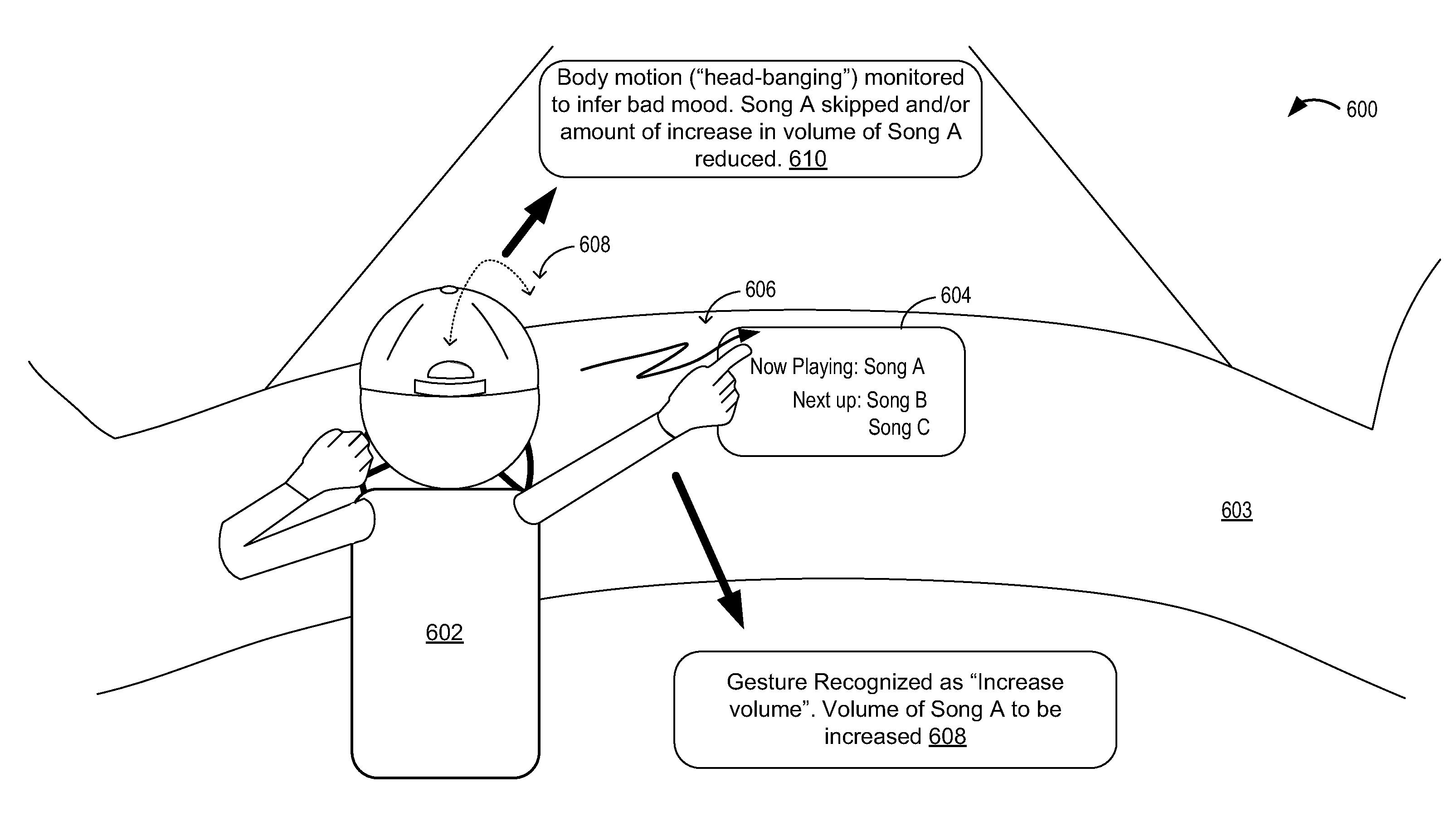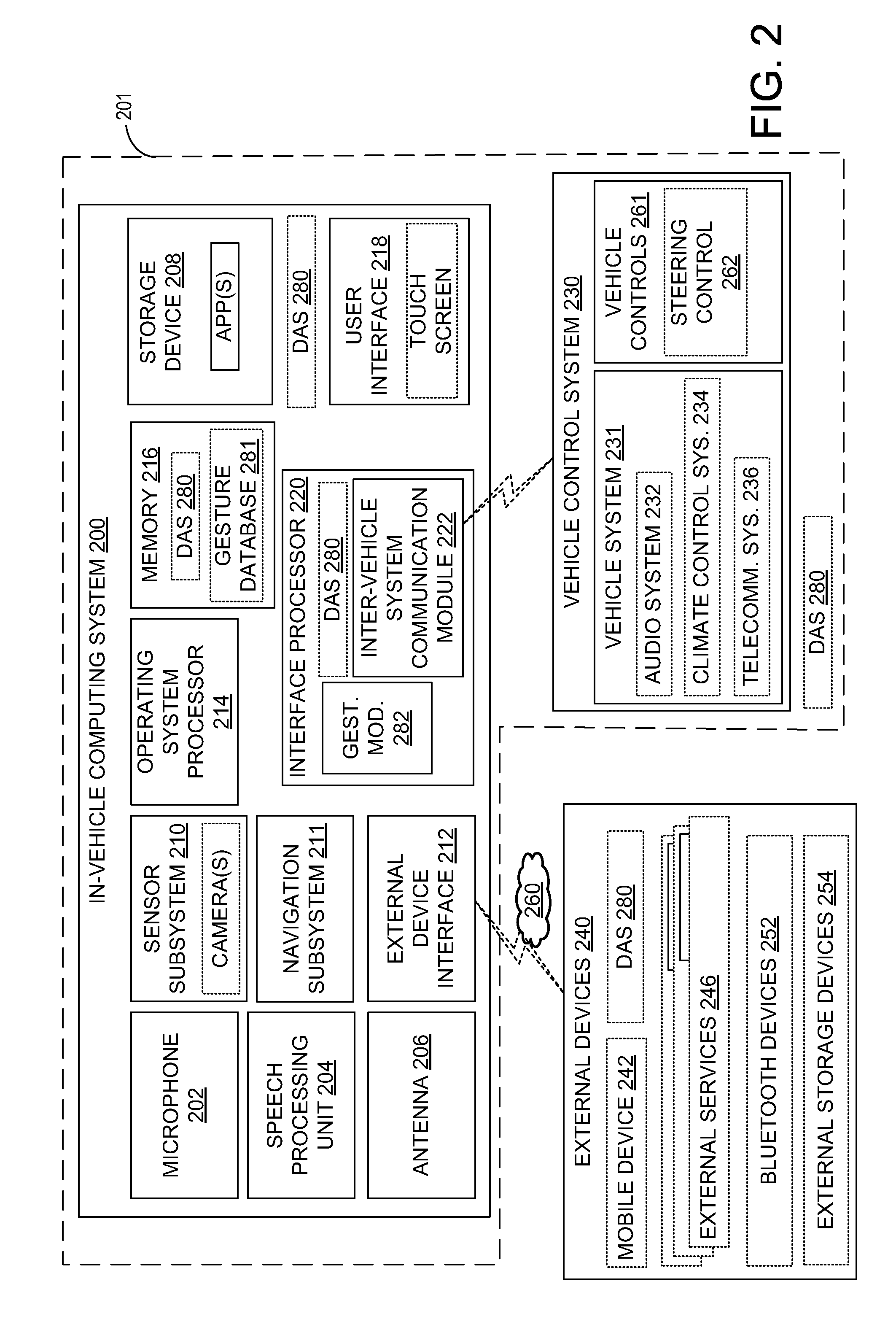Driver assistance system
a technology for driving assistance and driving assistance, applied in the field of driving assistance systems, can solve the problems of increased likelihood of vehicle collisions, lower user's cognitive state, and increased vehicle collision probability, so as to reduce the cognitive state of users, destabilize the person, and increase the propensity for vehicle collisions
- Summary
- Abstract
- Description
- Claims
- Application Information
AI Technical Summary
Benefits of technology
Problems solved by technology
Method used
Image
Examples
Embodiment Construction
[0015]The present description relates to driver assistance systems and modules that may be used to adjust a music output of an in-vehicle infotainment system, such as those of FIGS. 1-2, to reduce risky driving associated with bad user mood. A vehicle controller may perform a control routine, such as the routine of FIGS. 3-4 to infer a user mood based on user behavior, such as user body motion and body position, monitored while music is streaming into the vehicle. In particular, based on the user body motion relative to an aspect of the streaming music, the controller may determine whether the user's behavior is a manifestation of poor mood and potentially reckless driving. The controller may also recognize and distinguish body motions representative of control gestures from those indicative of user mood, and adjust vehicle music settings accordingly, as elaborated at FIG. 5. Further still, actuation of vehicle control elements based on recognized control gestures may be adjusted ba...
PUM
 Login to View More
Login to View More Abstract
Description
Claims
Application Information
 Login to View More
Login to View More - R&D
- Intellectual Property
- Life Sciences
- Materials
- Tech Scout
- Unparalleled Data Quality
- Higher Quality Content
- 60% Fewer Hallucinations
Browse by: Latest US Patents, China's latest patents, Technical Efficacy Thesaurus, Application Domain, Technology Topic, Popular Technical Reports.
© 2025 PatSnap. All rights reserved.Legal|Privacy policy|Modern Slavery Act Transparency Statement|Sitemap|About US| Contact US: help@patsnap.com



